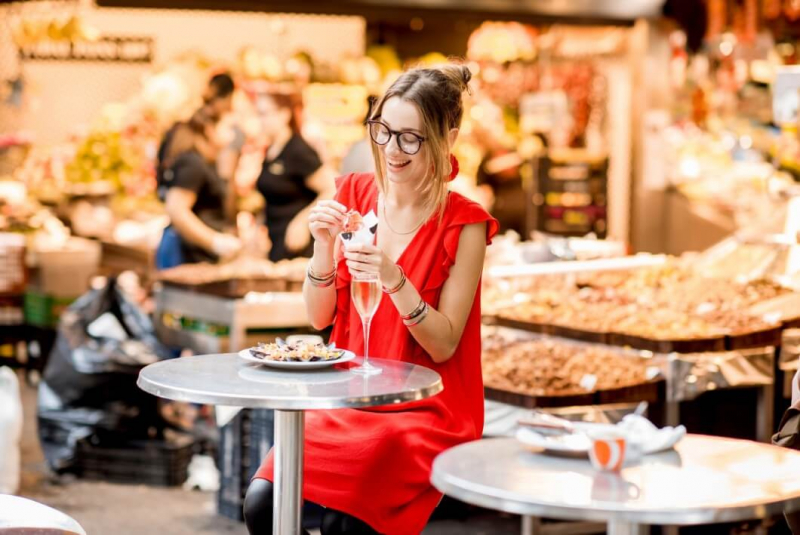The global culinary tourism market is poised for considerable expansion, with forecasts from the IMARC Group suggesting a climb to $1.1 billion by 2025 and a substantial leap to $4.2 billion by 2033, energized by a notable 14% annual growth.
More than just eating their way around the world, today’s travelers are increasingly interested in participatory culinary adventures, like classes, tours, and immersive experiences that forge connections with the local flavor. Fueled by social media buzz, a rising tide of health-conscious choices, and a general craving for authentic discovery, gastronomy tourism is reshaping how we travel and providing a boost to local economies simultaneously.
A Growing Appetite for Culinary Experiences
Travelers today are seeking more than just a simple meal; they want to understand the history and learn the methods behind local dishes. Gastronomy tourism has expanded beyond the simple tasting menu to feature hands-on opportunities such as cooking classes, seminars, and guided tours that teach specific techniques of the region. Whether mastering the art of pasta-making in Italy or learning the complex flavors of Thai curries, tourists are showing a willingness to engage directly with local culinary traditions. This yearning for immersive experience is shifting travel itineraries, positioning food more centrally within cultural experiences.
Social Media’s Role in Culinary Discovery
Digital channels are increasingly serving as inspiration for the culinary-inclined traveler. Platforms like social media, food TV, and even AI-driven recommendations are throwing a spotlight on unique eateries and often-overlooked destinations. According to a recent TripAdvisor study, approximately 83% of travelers leverage social media to research dining choices, from restaurants to casual cafes, drawn in by the visually appealing dishes and the stories surrounding them. Influencer marketing is playing a significant role, broadcasting colorful depictions from street food in Mexico City to fine dining in Paris, effectively turning gastronomy tourism into a highly “shareable” kind of adventure.
Health and Wellness on the Menu
The overall rise in health and wellness awareness is also influencing the gastronomy tourism sector. Today’s traveler tends to seek out dining experiences that match their health and lifestyle interests, with requests for organic, locally sourced, vegan, and gluten-free options. Destinations are adapting to this trend, increasingly offering sustainable, locally-focused menus that cater to the health-focused while also promoting environmentally friendly practices. Think of wellness retreats in Bali featuring plant-based cooking alongside vineyard tours in Tuscany centered on organic wines; culinary tourism is morphing into a more holistic activity designed to nurture body and planet.
Click here to preview your posts with PRO themes ››

Economic Impact on Local Communities
Culinary tourism serves as a potentially powerful economic stimulus for communities, funneling money toward restaurants, local farmers, market vendors, and local artisans. The World Travel Organization estimates that on average, tourists spend around 25% of their total travel budget on food and drink, with the percentage rising to as much as 35% in more expensive areas and dropping to 15% in more economical ones. By placing emphasis on local food traditions, culinary tourism provides support to small businesses and is key to protecting cultural traditions. Consider food festivals in Peru or olive oil tastings in Greece: these attract visitors and also boost local agriculture and handcrafted items.
Connecting Through Culture
Food really is a universal language, and culinary tourism offers travelers a valuable opportunity to connect directly with cultures, historical contexts, and local populations. Exploring local and regional cuisines through activities such as visiting bustling markets in Morocco or touring sake breweries in Japan, creates an authentic window into a destination’s distinct identity. These encounters foster better interactions, whether chatting with street food vendors or learning family recipes in a class, making travel feel much more engaging and definitely more memorable.
Challenges and Opportunities
As culinary tourism continues its expansion, tourist destinations face the potential challenge of balancing a drive for scalability with the maintenance of authenticity. Maintaining the high standards and cultural integrity of food-related activities in the face of increased demand is undeniably important. At the same time, the promotion of sustainable practices, particularly reducing food waste and providing increased support to local producers, is also vital. Securing sustained advantages is the ultimate aim. Nevertheless, the potential is considerable; places can definitely make use of platforms like social media and even AI to promote special food-related things they have to offer. Plus, creating interesting things for visitors to do, perhaps like tours that show how food goes directly from farms to their tables, or maybe online cooking lessons, these can appeal to a wider range of people.


